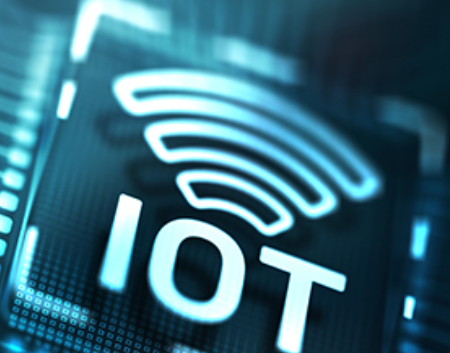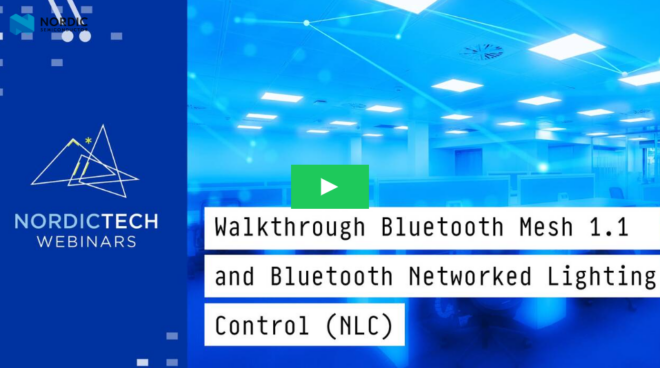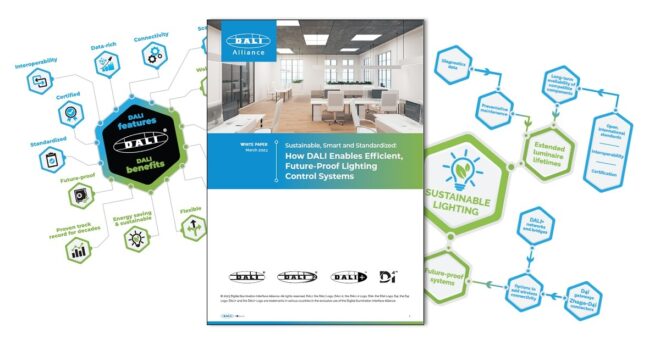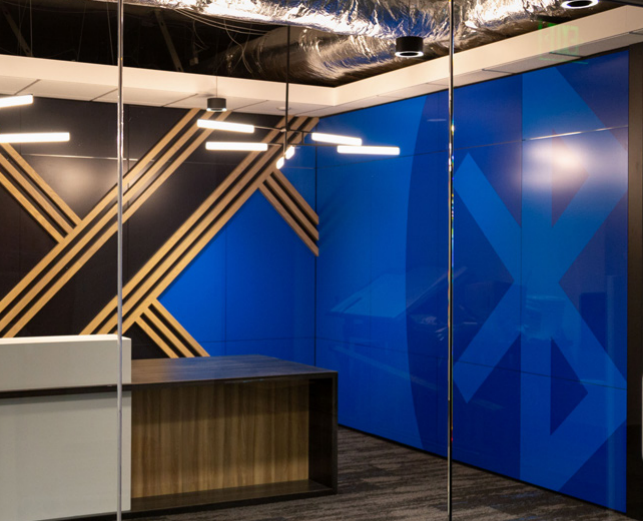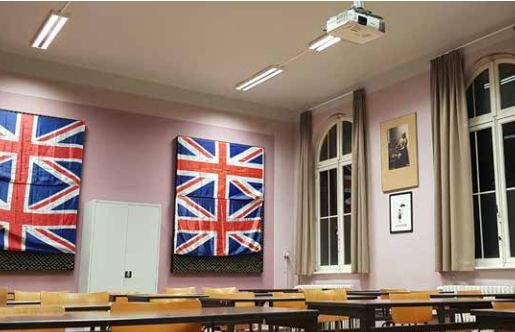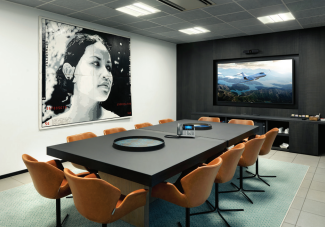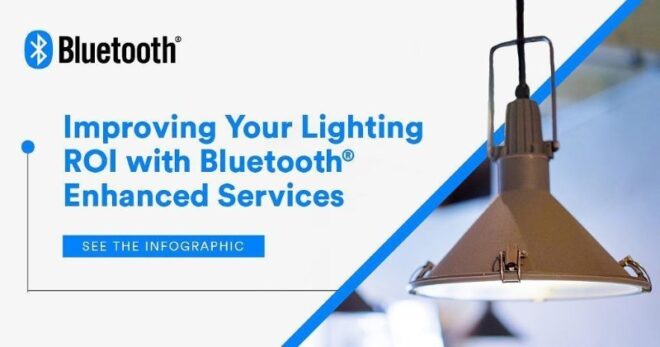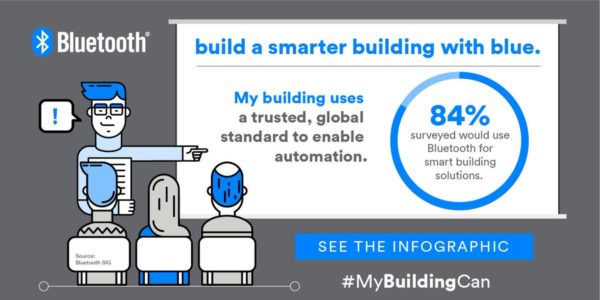A full-spectrum provider of professional and architectural lighting solutions, Feilo Sylvania supplies state-of-the-art products and systems to public, commercial, and private sectors around the world. Sylvania delivers intelligent building solutions through its SylSmart digital solutions based on qualified Bluetooth® Mesh, providing high-efficiency, reliable, secure, and data-rich systems. Its products are used in a wide range of industrial, commercial, and consumer applications, including logistics, office, retail, hospitality, museums and galleries, education, and residential.
I recently had an opportunity to talk with Edward Lees, head of technical product development – digital solutions and services for Feilo Sylvania International, about new trends in Bluetooth Networked Lighting Control in 2022 and what we can expect to see in 2023.
Q&A With Edward Lees From Sylvania
What Bluetooth technology trends most stick out to you as it relates to networked lighting control?
“…the integration of Bluetooth technology into lighting products and accessories is now…almost an expected requirement.”
From 2021 into 2022, there has been a real surge in the acceptance of wireless and Bluetooth® technology. I strongly believe the historical perception of Bluetooth technology as we knew it, from our smartphones, is being removed and more widely accepted as a viable solution for domestic, commercial, and industrial applications. From this launchpad, the integration of Bluetooth technology into lighting products and accessories is now, more than ever before, almost an expected requirement. There are still many challenges in changing a 100+ year old industry through digitalization that need to be tackled, but the future is looking bright.
What do you anticipate will be the new trends in 2023 for Bluetooth technology in networked lighting control?
Interoperability and the ability to backhaul data from qualified Bluetooth® mesh lighting control systems will be the biggest change in lighting to come in 2023. Intelligent buildings will call for more and more environmental sensing and processing at the edge. But getting the data from those devices from varying vendors could prove challenging and slow the adoption of intelligent lighting systems. It could also breed animosity for what should be a great opportunity to augment our buildings.
Using the pervasive and ubiquitous nature of lighting, we can collect a large amount of data from different sensors and provide a conduit to the internet without dramatic implementation requirements and minimum disruption. Long term, lighting will combine with Bluetooth technology to enable service delivery in the form of asset location services and, in particular, angle-of-arrival (AoA) technology will help cement lighting as the digital backbone of the building.
![]()
FEATURED INNOVATION
Bluetooth Mesh Networking
Bluetooth® Mesh enables the creation of large-scale device networks and is ideally suited for control, monitoring, and automation systems where hundreds, or thousands of devices need to communicate with one another.
What has been the biggest demand from your customers as it relates to Bluetooth technology?

How can I make my building more energy efficient as quickly as possible? In commercial buildings, lighting represents 30 percent of the energy consumed, and, with the energy crisis, cost of operation has increased dramatically. Building owners and their occupants are increasingly seeking options to reduce their operating costs and their carbon footprint.
The nature of qualified Bluetooth® Mesh, being wireless and so easy to integrate into lighting, has made it ideal for retrofitting energy-efficient LED lighting. It also ensures that intelligent lighting controls are driving energy consumption down by over 70 percent and improving light quality and occupant comfort simultaneously.
The de-centralized concept of qualified Bluetooth Mesh places the intelligence in every luminaire and facilitates a point-to-point replacement with minimal, if any, wiring changes. A simple swap and quick programming instantly impact your operating costs. The growth in demand for connectivity and data sharing across systems has become more and more prominent. Leveraging the connectivity and open standard principles of Bluetooth technology, you can gather granular data through DiiA D4i and share it reliably and securely to other systems, such as building management systems (BMS).
What has Felio Sylvania focused on in 2022, and what will you focus on in 2023?
Feilo Sylvania has focused on making its large and diverse range of lighting products qualified Bluetooth® mesh enabled in the form of SylSmart Connected and delivering them across as many applications as possible, especially for industrial and warehouse applications. Also, we focused on enabling every device to gather a wide array of data to facilitate our 2023 vision for our connected cloud platform, SylSmart Connected Pro, to offer rich and insightful data. This information will help our customers maximize their lighting-related costs and supports digitalization and decarbonation by providing opportunities to save costs beyond lighting. As an example, we will enable granular occupancy analytics to maximize the efficient use of space and share data to other systems to augment their efficiency. It’s a very exciting year to come.
What do you think the biggest difference will be in 2022 vs 2023 for Bluetooth technology?
“I believe we will see a dramatic uptake in the use of Bluetooth technology in networked lighting control systems.”
Bluetooth® technology is reliable, secure, and interoperable. Hopefully, with the next set of Bluetooth Mesh standards soon to be released, Bluetooth technology will become even more relevant, more future-proof, and even easier to adopt. Furthermore, I believe we will see a dramatic uptake in the use of Bluetooth technology in networked lighting control systems, and the availability of various device types across different applications will open up an ecosystem for customers to realize their vision.
I strongly believe the world of asset tracking and asset location will come more and more to the forefront of discussion.
The single biggest impact will be connectivity to other systems. 2024 and 2025 will see the implementation of the building automation and control systems (BACS) decree as well as an increased need for environment social governance (ESG) and corporate social responsibility (CSR) with evidence of performance. Bluetooth technology could have a strong role to play in helping a wide range of users, including building and business owners, meet their objectives and responsibilities.
![]()
FEATURED INNOVATION
Bluetooth Networked Lighting Control
Bluetooth® Networked Lighting Control systems are deployed in offices, retail, healthcare, factories, and other commercial facilities to deliver a combination of energy savings, an enhanced occupant experience, and more efficient building operations.
Feilo Sylvaniaはプロ向け・建築用途にあらゆる照明ソリューションを提供しており、最先端の製品やシステムを世界中の公共・商業・民間部門に供給しています。インテリジェントビル用には認証済みBluetooth® MeshベースのSylSmartデジタルソリューションがあり、効率と信頼性、セキュリティの全てに優れた、データが豊富なシステムを提供しています。同社の製品は、物流、オフィス、小売、ホスピタリティ産業、博物館や美術館、教育、住宅など、産業用、商用、消費者用の幅広い分野で使用されています。
先日、Feilo Sylvania Internationalのテクニカル製品開発・デジタルソリューション&サービス部門責任者のエドワード・リーズ(Edward Lees)氏に、Bluetoothネットワーク照明制御に関して2022年に見られた新しいトレンドと2023年の展望についてお話を伺いました。
Sylvaniaのエドワード・リーズ氏とのQ&A
ネットワーク照明制御に関連して、最も印象に残っているBluetooth技術のトレンドは何ですか。
2021年から2022年にかけて、ワイヤレス技術とBluetooth®技術の導入に大きな高まりが見られました。スマートフォンで慣れ親しまれていた従来のBluetooth技術のイメージが変わり、家庭用・商業用・産業用アプリケーションで利用できるものとして広く受け入れられつつあると強く感じています。このような観点から、Bluetooth技術の照明器具やその付属品への搭載は、以前にも増して当たり前の要件となっています。100年以上続く業界をデジタル化していくには、取り組むべき課題は未だに数多くありますが、将来の展望は明るいと考えています。
ネットワーク照明制御関連のBluetooth技術について、2023年にはどのような新しいトレンドを予想していますか。
相互運用性と、認証済みBluetooth® Meshの照明制御システムからデータを回収する機能が、2023年に訪れる照明関連での最も大きな変化となるでしょう。インテリジェントビルでは、末端での環境感知と情報処理がこれまで以上に求められるようになります。ですが、さまざまなベンダーのデバイスからデータを集めるのは難しい作業となる可能性があり、インテリジェント照明の導入ペースを遅らせる原因となり得ます。ビル機能強化の絶好の機会を得られるにもかかわらず、かえって反感を生み出す原因となってしまうことも考えられます。
至るところにあるという照明の性質を活用すれば、大掛かりな工事を要せず、業務への影響も最小限に抑えながら、各種センサーから大量のデータを収集してインターネットへと流すことができます。長期的には、照明とBluetooth技術との組み合わせで、資産位置情報サービスが提供できるようになるでしょう。特に屋内測位のAoA(Angle of Arrival、受信角度)技術によって、ビルのデジタル基盤としての照明の役割が確立されると思います。
Bluetooth技術に関連して、これまでお客様から寄せられた最大の要望は何ですか。
どうしたら可能な限り早期にビルの省エネ化を達成できるか、です。商業ビルの場合、照明はエネルギー消費の30%を占めます。エネルギー危機でビル運用コストは高騰しています。ますます多くのビルオーナーやテナントが、運用コストとカーボンフットプリントを削減する方法を探しています。
認証済みBluetooth® Meshは、ワイヤレスであり、かつ照明に簡単に組み込めるというその性質から、省エネ性能の高いLED照明を後付けする際に理想的です。インテリジェントな照明制御によって電力消費が70%以上削減できると同時に、照明の品質と利用者の快適性も向上します。
認証済みBluetooth Meshの分散的なコンセプトのおかげで、配線の変更を伴わず、もしくは最小限の変更で、インテリジェント機能を備えた照明器具と個別に交換していくことができます。単純な交換と素早いプログラミングで、すぐに運用コストに違いを生み出せるのです。システム全体にわたるコネクティビティとデータ共有に対する需要は、ますます顕著な高まりを見せています。Bluetooth技術のコネクティビティとオープンスタンダードの原則を活用することにより、DiiA D4iを通して粒度の細かいデータを集め、BMS(ビルマネジメントシステム)などの他のシステムに安全・確実にデータを渡すことができます。
Feilo Sylvaniaの2022年の注力事項と、2023年の重点的な取り組みについて教えてください。
Feilo Sylvaniaの幅広く多様な照明製品を認証済みBluetooth® Meshに対応させ、SylSmart Connectedという照明制御システムに組み込んで、特に産業関連および倉庫での用途など、可能な限り多くの用途で市場に届けることに重点が置かれました。また、当社のコネクテッドクラウドプラットフォーム、SylSmart Connected Proによって洞察に満ちた豊富なデータを提供するという2023年のビジョンを推進するため、各デバイスから幅広い種類のデータを収集できるようにすることにも注力しました。集められた情報は、当社の顧客が照明関連コストを最大限活用するためだけでなく、照明の領域以外でのコスト削減の機会も提供し、デジタル化と脱炭素化に役立ちます。たとえば、スペースの稼働状況分析を細かい粒度で可能にすることで利用効率を最大化でき、データ共有を通じて他のシステムの効率向上を図ることも可能です。こうしたビジョンから、2023年への期待が高まっています。
Bluetooth技術に関して2022年と2023年とで最も大きな変化は何だと思いますか。
Bluetooth®技術は信頼性と安全性が高く、相互運用性に優れます。近くリリースされるBluetooth Meshの新規格では、Bluetooth技術がさらに身近で将来にわたる有用性が増し、導入もより容易になることを期待しています。さらに、照明制御システムのネットワークにおけるBluetooth技術の採用が劇的に拡大し、さまざまな用途にわたる機器が種類豊富に登場して、お客様が思い描くものを実現するためのエコシステムが出現すると考えています。
また、資産追跡と資産の位置情報の分野がますます話題の中心を占めるようになると確信しています。
突出した大きな変化は、他のシステムとのコネクティビティに関して予想されます。2024年と2025年にはビル自動制御システム(BACS)に関する法令が施行されると共に、ESG(環境・社会・ガバナンス)とCSR(企業の社会的責任)に対する要求もさらに高まり、エビデンスを伴う成果が求められると考えられます。ビルオーナーや事業主をはじめとする幅広いユーザーが目標を達成し責任を果たす上で、Bluetooth技術は強力な役割を果たし得るのです。

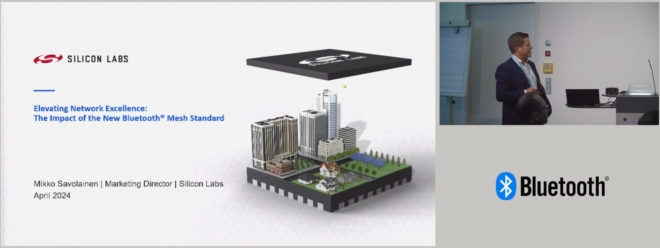
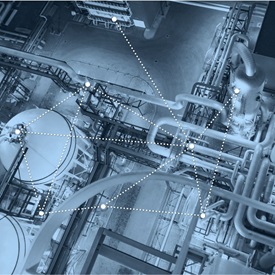

![shutterstock 1653733096[1]](https://www.bluetooth.com/wp-content/uploads/2024/03/shutterstock_16537330961-660x372.jpg)



